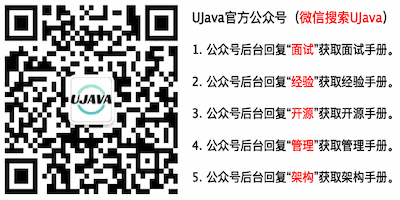桥接模式
约 628 字大约 2 分钟
概述
介绍:桥接模式是一种将抽象化和实现化解耦的设计模式。它使用了封装、聚合以及继承等基本技术,将两个独立变化的维度通过抽象化的方式进行桥接,从而降低了它们之间的耦合度,使得系统更加灵活。将抽象部分与它的实现部分分离,使它们都可以独立地变化。是用组合关系代替继承关系来实现,从而降低了抽象和实现这两个可变维度的耦合度。
场景:
- 1.抽象和具体实现之间 , 需要增加更多灵活性的情况。
- 2.不希望使用继承 , 或 因多层继承导致系统类的个数增加。
- 3.一个类存在 2 个或更多的 独立变化维度 , 并且这些维度都需要独立扩展。
源码中JDBC 规范和不同数据库厂商驱动都用的桥接模式
优点:
- 1.抽象与实现分离,扩展能力强
- 2.符合开闭原则
- 3.符合合成复用原则
- 4.实现细节透明化
不足:由于聚合关系建立在抽象层,要求开发者针对抽象化进行设计与编程,能正确地识别出系统中两个独立变化的维度,这增加了系统的理解与设计难度
具体示例
// 抽象类部分
abstract class Abstraction {
protected Implementor implementor;
public Abstraction(Implementor implementor) {
this.implementor = implementor;
}
public void operation() {
implementor.operationImpl();
}
}
// 修正抽象类
class RefinedAbstraction extends Abstraction {
public RefinedAbstraction(Implementor implementor) {
super(implementor);
}
public void operation() {
// 可以在这里添加一些额外的操作
super.operation();
}
}
// 实现类接口
interface Implementor {
void operationImpl();
}
// 具体实现类
class ConcreteImplementorA implements Implementor {
public void operationImpl() {
System.out.println("ConcreteImplementorA operation.");
}
}
class ConcreteImplementorB implements Implementor {
public void operationImpl() {
System.out.println("ConcreteImplementorB operation.");
}
}
// 客户端代码
public class BridgePatternExample {
public static void main(String[] args) {
// 使用具体实现类A
Abstraction abstractionWithA = new RefinedAbstraction(new ConcreteImplementorA());
abstractionWithA.operation();
// 使用具体实现类B
Abstraction abstractionWithB = new RefinedAbstraction(new ConcreteImplementorB());
abstractionWithB.operation();
}
}在这个例子中,Abstraction类是一个抽象类,它通过组合方式引用了Implementor接口。RefinedAbstraction是一个修正抽象类,可以进一步扩展抽象类的行为。Implementor接口定义了实现类需要实现的操作。ConcreteImplementorA和ConcreteImplementorB是具体的实现类,实现了operationImpl方法。客户端代码中,我们创建了使用不同实现类的抽象类对象,并调用了操作方法。
公众号更有货,推荐关注!
